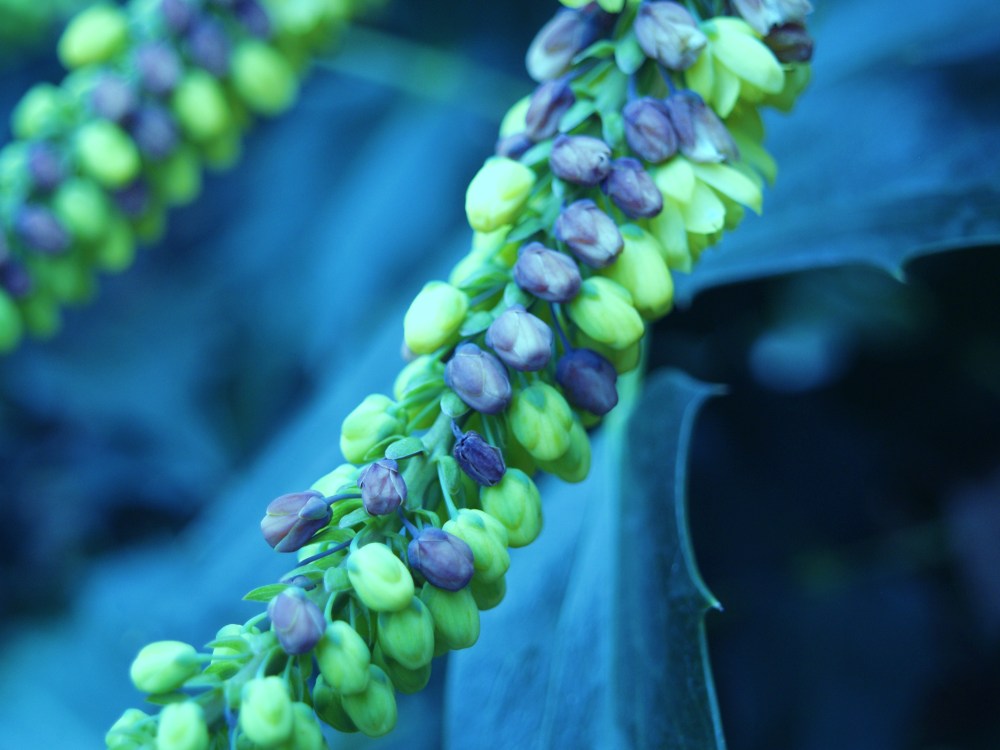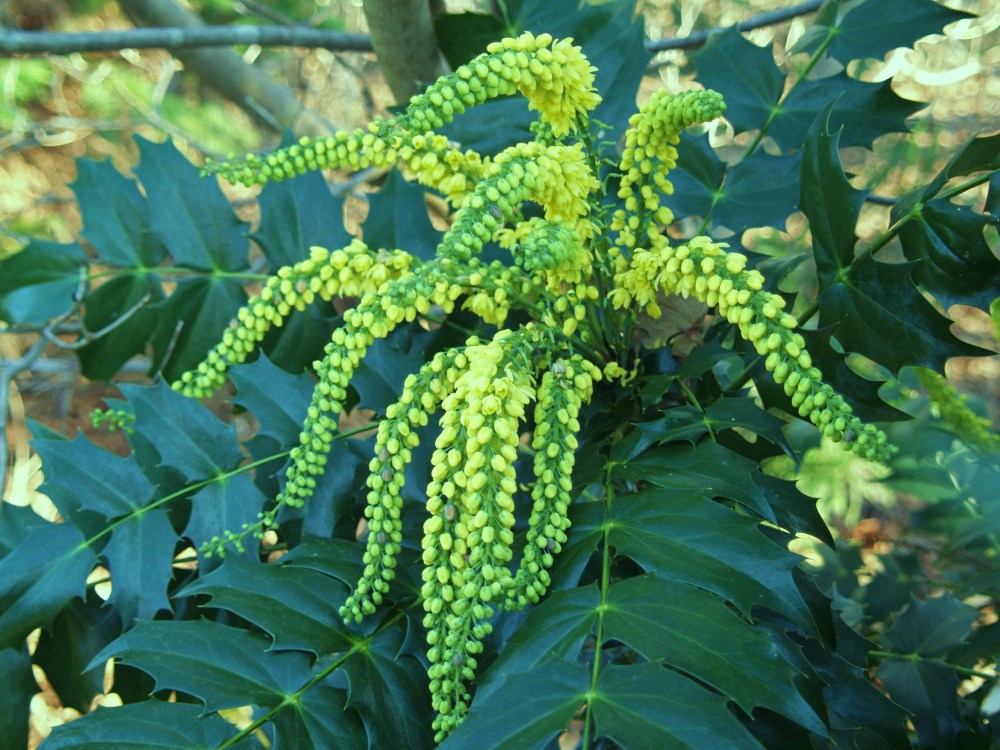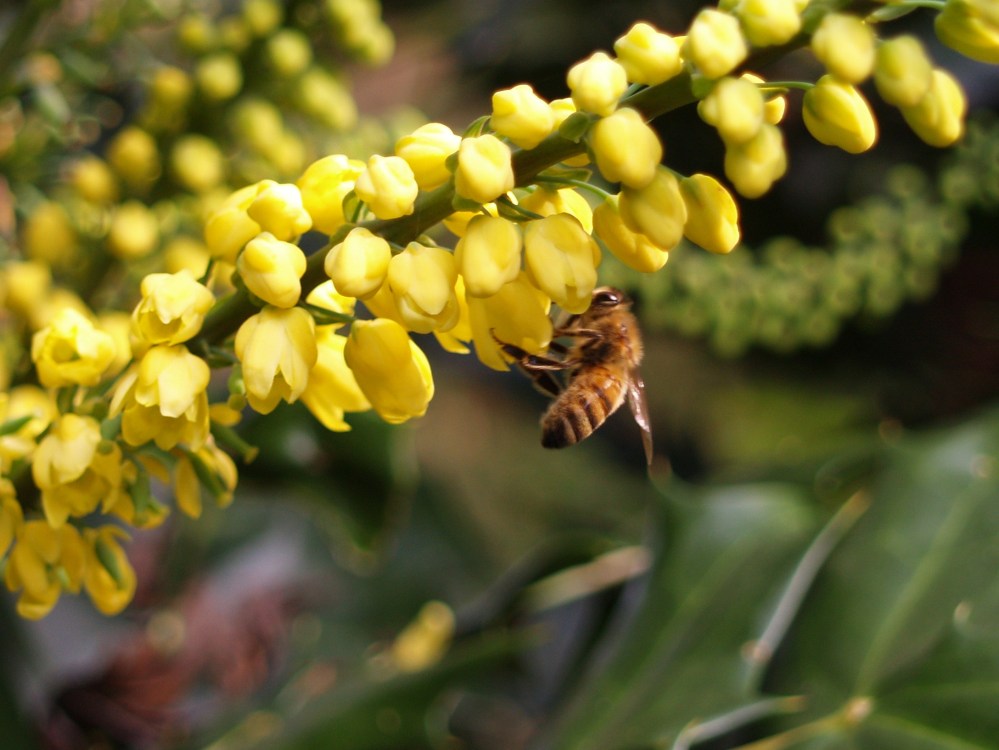Occasionally, I consider that one plant or another might be my particular favorite, and then another pops into bloom and …. well, you can see where this is going. I’m fairly certain that it’s unrealistic for most gardeners to pick one favorite plant, and depending on the time of the year I have a handful, or perhaps dozens of favorites.
I’ve known gardeners who are wildly enthusiastic about irises, or daylilies, and they are likely to feature them almost exclusively in their gardens. I’m as apt to fall madly in love with a marvelous Japanese iris this week, and a variegated leaf dogwood, Japanese maple (any of twenty-some cultvars), or a pendulous European beech the next. I get especially excited by the first late winter blooms of witch hazels and hellebores, and by the late summer flowers of toad lilies. I’m a hopeless case, and this is why I have one of too many plants, and more collections than I can recall.
In the middle of December there are berries galore on the hollies and nandinas, and these are highly treasured, but I’ve become particularly fond of the late autumn blooming ‘Winter Sun’ mahonia (Mahonia x media ‘Winter Sun’, above). In my northwestern Virginia garden ‘Winter Sun’ begins to flower early in November, and shaded plants will often continue blooming into January.
I was recently traveling through several of the Gulf coast states, and in warmer climes ‘Winter Sun’ was only starting to flower in early December, which indicates to me that the bloom is triggered by cold temperatures rather than dwindling hours of daylight. In southern gardens I expect that the mahonia is likely to flower through January, but in these gardens there are also camellias and whatever else blooming, so ‘Winter Sun’ is not appreciated so much as in my garden where these will be the only flowers from mid December into late January.
In addition to the hybrid ‘Winter Sun’ I’ve planted the Oregon grape (Mahonia aquifolium, sometimes called Oregon grape holly), leatherleaf mahonia (Mahonia bealei), and one or two of a handful more cultivars. ‘Soft Caress’ (Mahonia eurybracteata ‘Soft Caress’) with narrow, fern-like foliage, is also a late autumn bloomer, but it is marginally cold hardy and has failed to thrive or flower in my garden.
The common Oregon grape mahonia flowers in the spring, but I’ve found that it is not as vigorous in my garden as others, and the holly-like foliage tends to blemish with spots or areas of brown so that it is not as attractive as others. Its growth is spreading and irregular, and to my thinking Oregon grape is unremarkable compared to ‘Winter Sun’ and leatherleaf.
The spring flowers of leatherleaf mahonia (Mahonia bealei, above) are similar in appearance to ‘Winter Sun’, but leatherleaf is an awkward, sprawling shrub, while ‘Winter Sun’ grows more upright and compact. The blooms of both mahonias are followed by small, grape-like fruits, though I’ve mentioned more than once that in my garden the fruits are more abundant on leatherleaf. Friends in the south who grow both tell me that ‘Winter Sun’ fruits heavily for them, so I presume that colder temperatures are to blame.
Occasionally, a seedling or two of leatherleaf mahonia pop up along the forest’s edge of my garden, spread by birds. They are not widespread or numerous, and I would not consider this mahonia to be at all invasive. Several seedlings have been encouraged to remain in dry shaded spots in the garden, where they continue to thrive without care. Often the seeds of hybrids are sterile, and indeed I have not seen seedlings of ‘Winter Sun’.
In a recent magazine article about winter berries the author stated that mahonia fruits are not favored by birds, but they disappear quickly in my garden, so it appears that Virginia birds find them to be acceptable, and perhaps this is a regional difference also. Over the past few years I’ve seen more fruits on the ‘Winter Sun’ mahonias in my garden, but they are smaller than leatherleaf’s, and since the clusters are smaller the fruits don’t make as much of a show as on the spring blooming mahonia.
The leaves of both leatherleaf and ‘Winter Sun’ are well armed with thorns, and heaven forbid that you should ever step on a dead leaf of either with a bare foot. I have, more than once, and the experience is painful. The barbs on ‘Winter Sun’ are more plentiful, and I’ve heard more than a few people recommend this as an ideal plant to grow under a teenage daughter’s window. I have only sons (who are grown and long gone from our home), so I can’t imagine why.
The panicles of yellow flowers on ‘Winter Sun’ are considerably longer, and the individual flowers are slightly larger, so that its floral display is superior to the spring bloomers. I’ve read that the blooms are fragrant, but I think that they’re not particularly so, and I have a poor sniffer so that I have not noticed any scent at all. On warm days in late autumn the few remaining bees are highly appreciative of the flowers, and ‘Winter Sun’ is fully in flower deep into December, so how could it not be a favorite?
I live in Mt. Airy MD, and have Grape Hollies. The catbirds especially seem to love the berries, as they will stay around for days until most are gone. I haven’t noticed other birds go after those berries. I have transplanted a number of seedlings into areas where they are becoming rather attractive, although they tend to sprawl. Where they are, it doesn’t matter. I really do enjoy your column and look forward to it – hope it is around for a long time!
I cannot see any of the mahonias from the house, so I haven’t a clue what type of birds eat the fruit. In fact, with only a few exceptions I don’t know one bird from another. I should study up on this, I know, since there are so many birds in the garden. Thanks for writing.
Hi Dave,
I love the pictures, especially the Mahonia against the backdrop of bare branches. I think I want to put a row of them against a brick wall to grow under windows at the basement walkout level. It does face south so will the heat be a problem? …if so, what other thorny plants might have the same appeal where growth can be kept under 4 feet? Also, is it really deer resistant?
Thanks!
I’ve planted mahonias in both full sun and dense shade, and it prefers the sunnier spots and light shade. In both sun and shade ‘Winter Sun’ grows compactly, but faster with more sunlight. Mahonias are very tolerant, so I don’t think it will have a problem with the southern exposure.
I can vouch that the foliage is lethal enough that deer do not bother it, though I had a reader tell me that deer ate the blooms. In my experience the deer don’t venture near it.
Growing up in Georgia, I always took for granted the many beautiful blooms from shrubs, flowers, trees, etc. I was visiting my Dad there last week and “rediscovered” a leatherleaf in bloom outside the patio door. It’s been there about 50 years; and in the moonlight the blooms looked like frosty white fireworks. I noticed shoots coming up in various places courtesy of birds; and wondered if one of those would survive transplanting in No. Va. coming from Georgia. What do you think?
There shouldn’t be a problem with transplanting leatherleaf mahonia from Georgia to a more northern climate. Leatherleaf mahonia is cold hardy to zone 7 (average minimum temperature of zero degrees), but the ones in my garden suffered no damage from temperatures at least ten degrees colder. I’ve found that plant hardiness designations are widely variable, and some zone 7 plants barely stand a chance for survival in my garden while others are extremely sturdy.